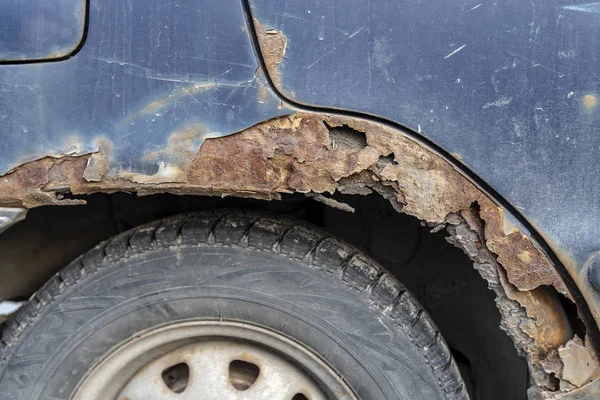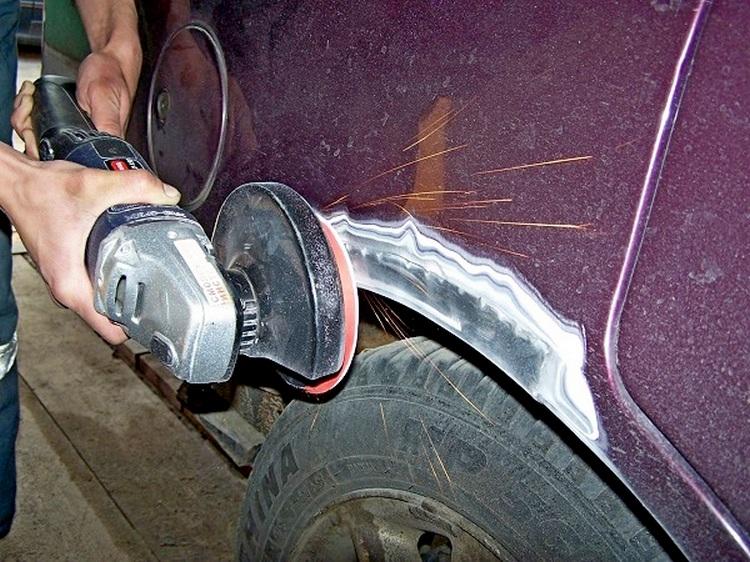
Various weather conditions leave their marks on our cars, but the impact of rain and frost may not be immediately noticeable. It often takes time for the first rust spots to appear on the vehicle.
The paintwork is particularly vulnerable to minor damage caused by stone chips and scratches. Moisture can seep in and chemically react with the metal, leading to corrosion. To prevent further damage, it’s advisable to address rust early and protect your car accordingly.
How to Combat Rust Film?
Surface rust can often be removed with car polish.
Can Small Rust Spots on Paint be Removed by Myself?
Yes, it is possible. Instructions on how to do this are provided below.

What If Rust Affects Load-Bearing Parts?
In such cases, filler is not sufficient; the parts must either be replaced or reinforced with metal sheets. This task should be left to professionals.
1. Dealing with Rust Film
Corrosion can manifest in various forms and severity on a vehicle. The approach to removing rust and restoring the car’s shine depends on the specific situation.
If the rust is superficial, it’s commonly referred to as “flash rust.” This type of corrosion is relatively simple to deal with. A car care polish can usually remove the rust film, along with dirt and rust particles from the paint.
After removing the rust, consider taking the car through a car wash. Applying a layer of hot wax afterward may provide temporary protection against rust film.
If rust film cannot be removed with the above method, the issue likely lies beneath the paint. Further actions for such cases are discussed below.

2. Removing Small Rust Spots Yourself
When corrosion penetrates beneath the paint, it’s crucial to act against rust promptly to prevent its spread. Minor repairs can be done personally, as outlined below.
Before starting, mask off the “work area” meticulously to avoid damaging other vehicle parts. To remove surface rust, use sandpaper of various grits or a wire brush for larger areas. A rust remover can help loosen rusted screws.
To permanently remove rust, clean the area until only bare metal is visible, removing all rust and paint residues. Next, thoroughly clean the surface with acetone or mineral spirits.
Apply an anti-rust agent next. A rust converter chemically reacts with the rust to form a dark gray iron compound.
Finally, repaint the area, applying an anti-rust primer first to prevent future corrosion.
Removing rust can be challenging, especially for the underbody, which might require a lift. Therefore, for extensive rust, professional workshop intervention is often necessary.

3. When to Take Your Car to a Workshop for Rust Removal
If corrosion has created holes in the metal, superficial rust removal is insufficient for restoration. These complex cases require professional attention.
For rust holes, the missing material needs replacement, either with resin or filler, after thorough rust removal and preparation. A rust converter is applied and left to work for several days before applying resin or filler. After hardening, the area is sanded down before painting begins, including primer, color layers, and clear coat.
Important: If rust affects load-bearing parts, they cannot simply be filled. These must be replaced or reinforced by welding on new metal sheets to ensure road safety.
Professional rust removal can be costly, including labor, painting, and possibly spare parts. To professionally eliminate rust from your car, expenses can run into several hundred euros.
Leave a Reply